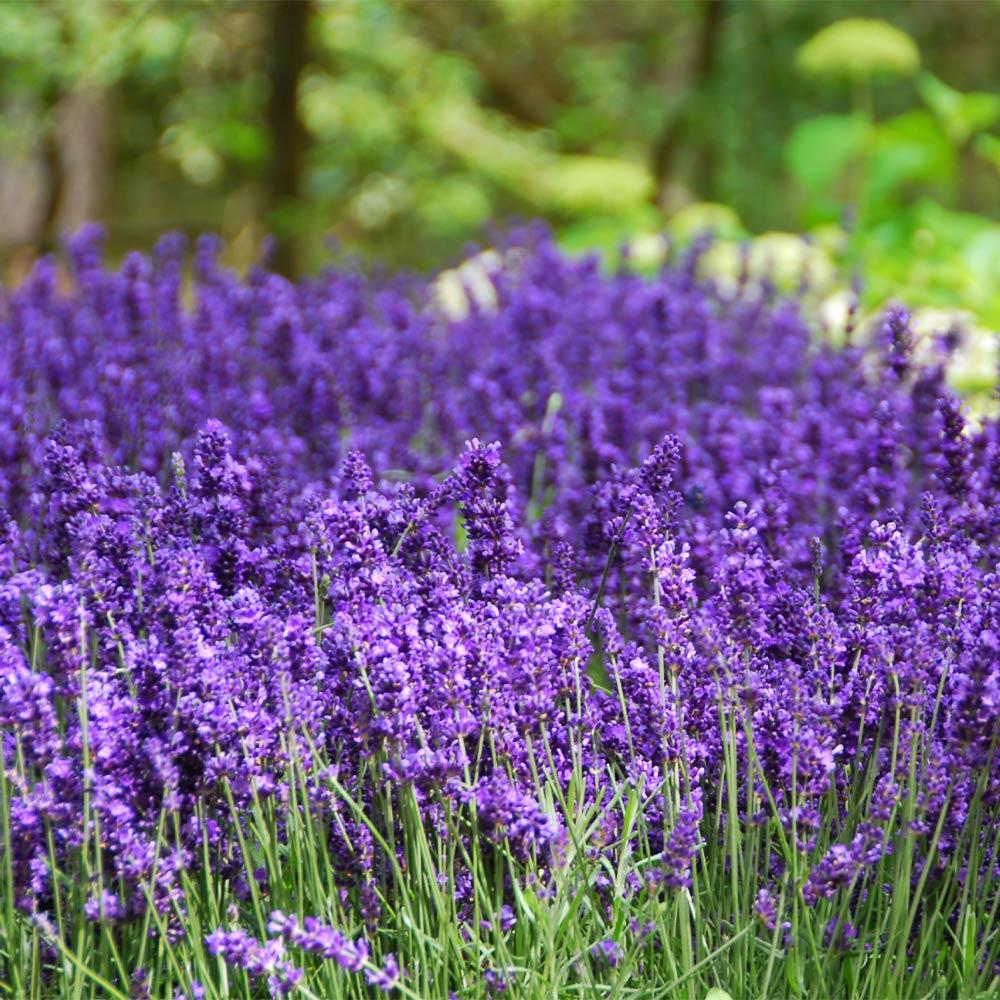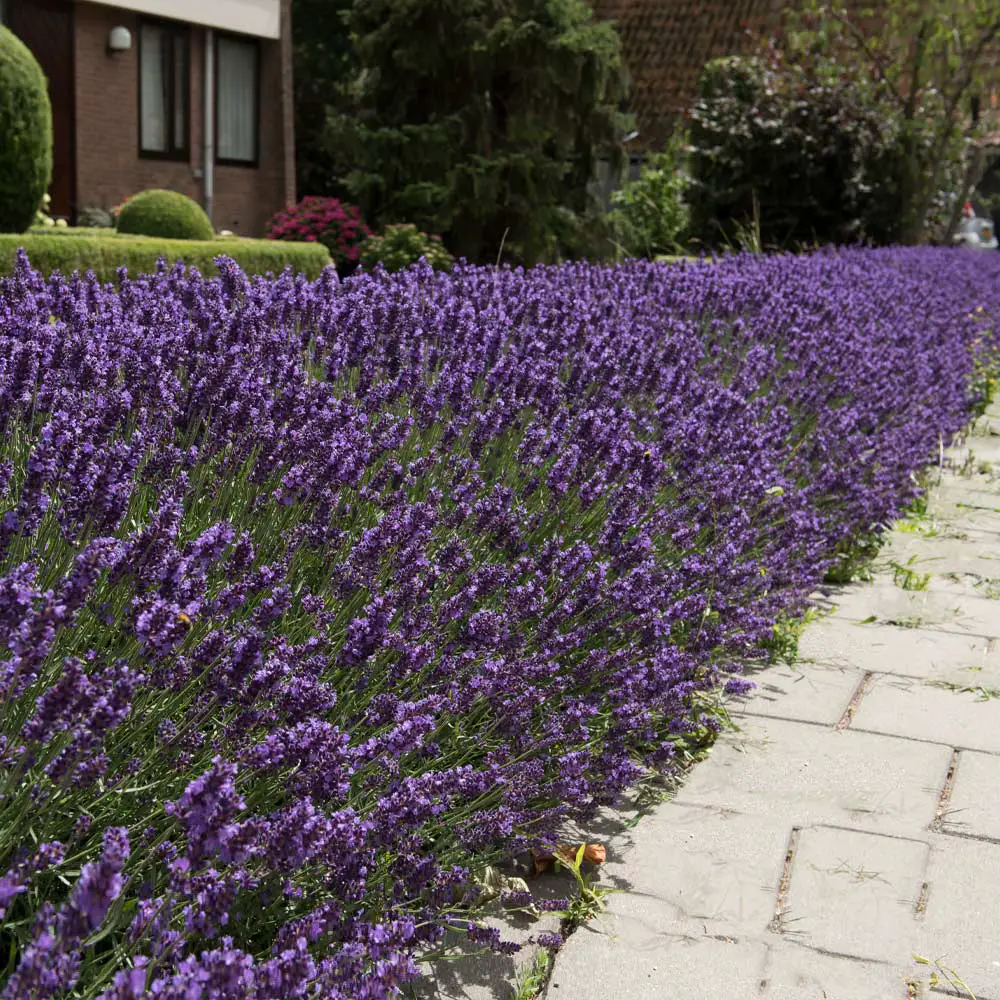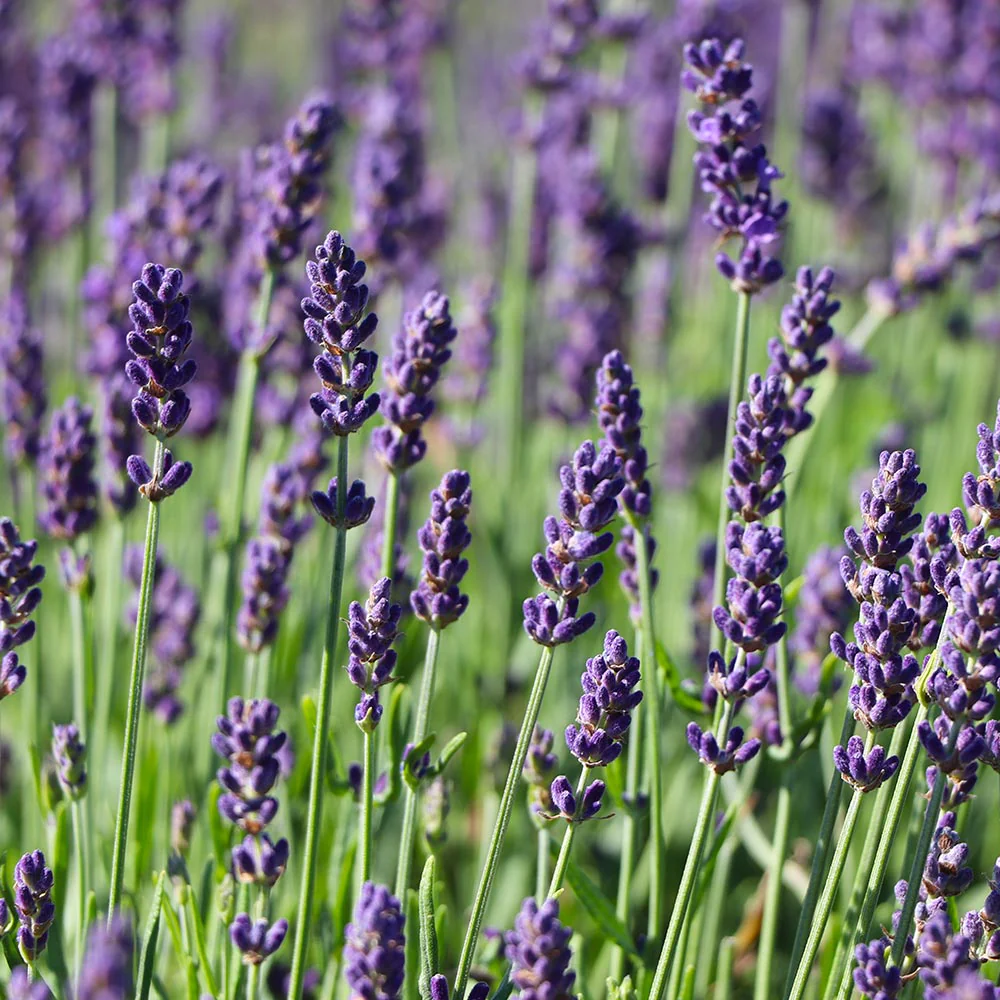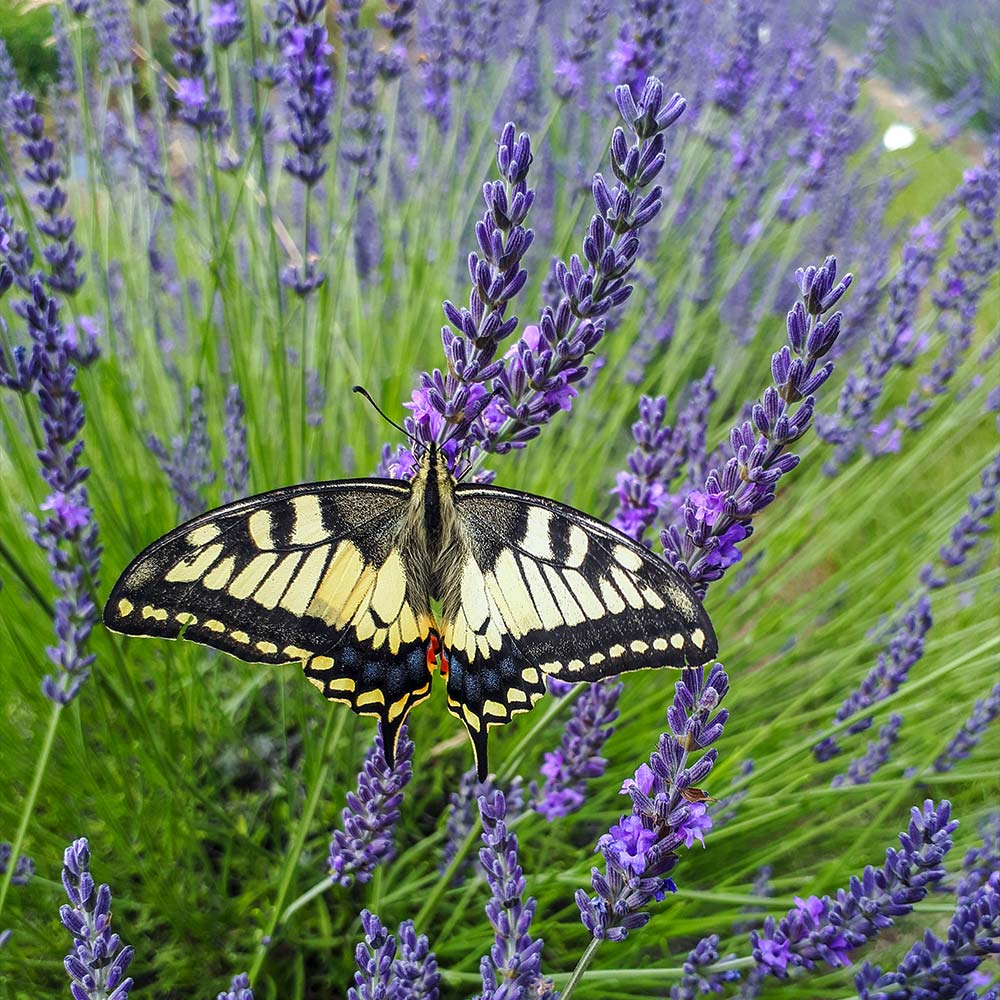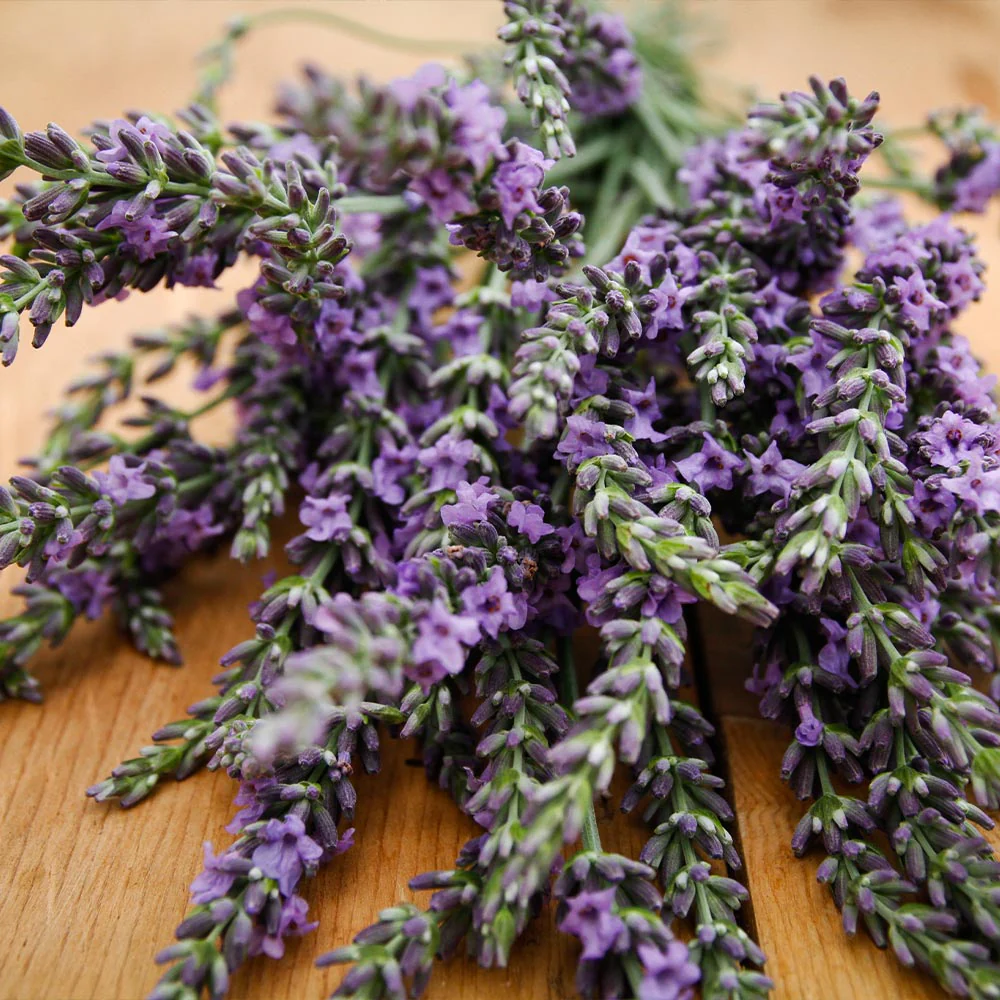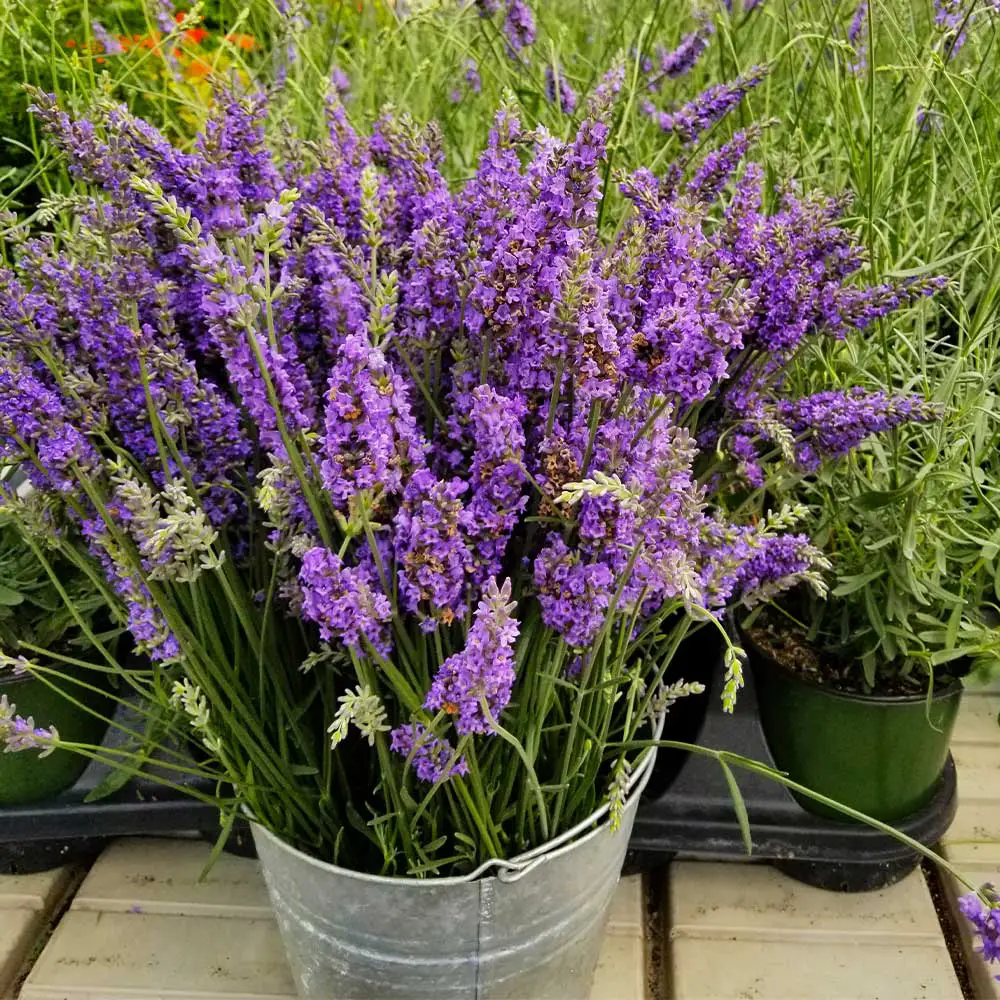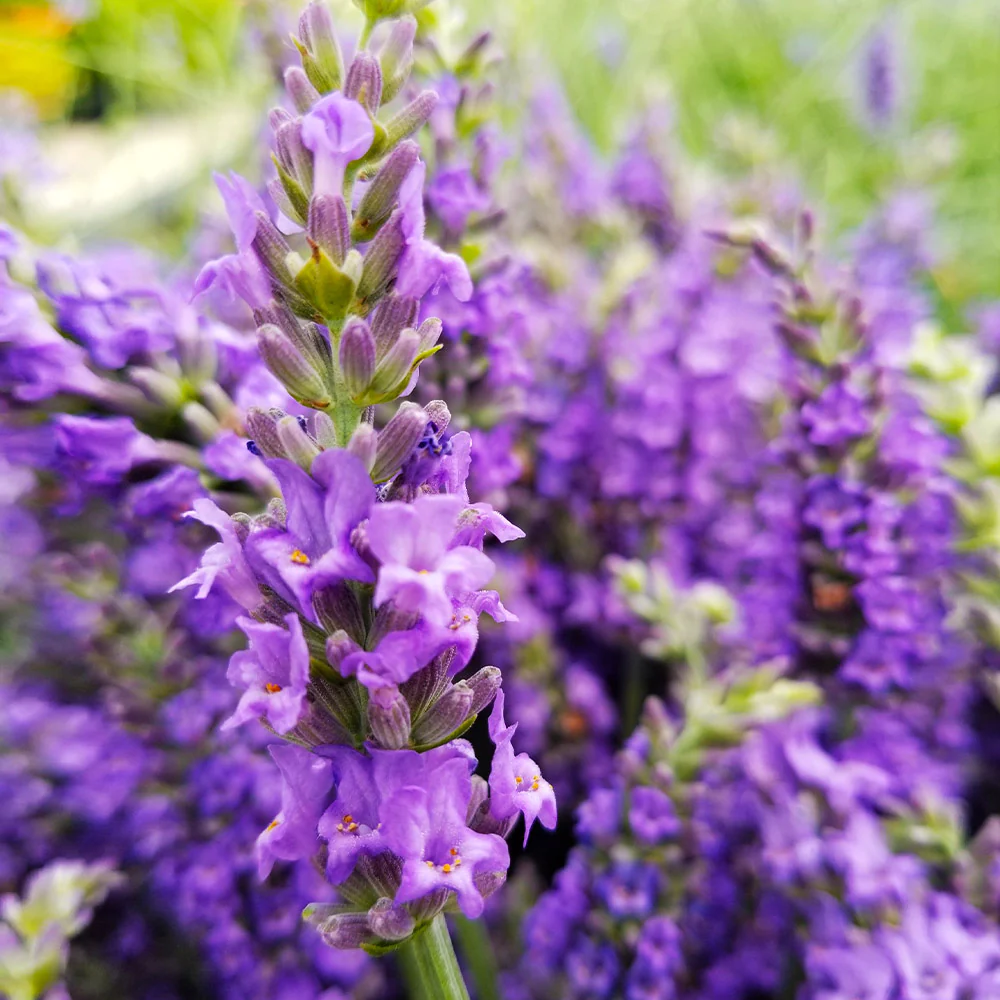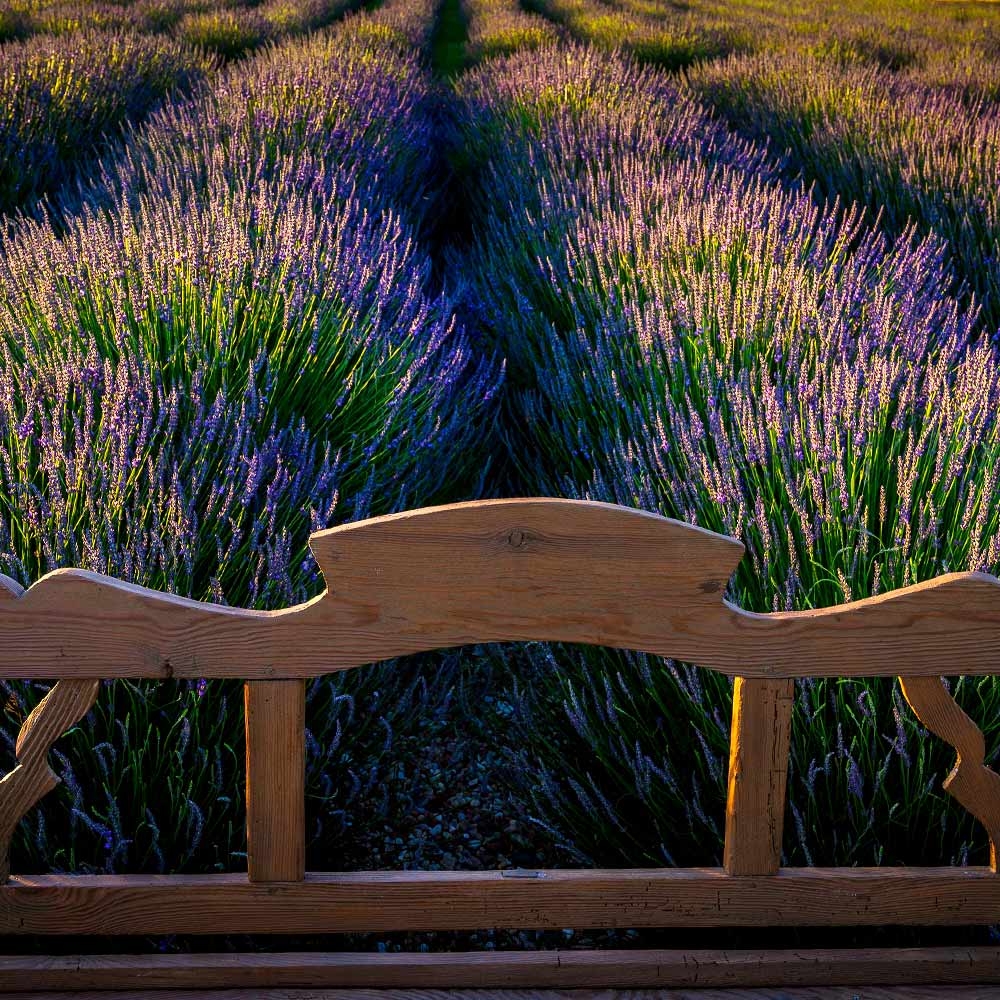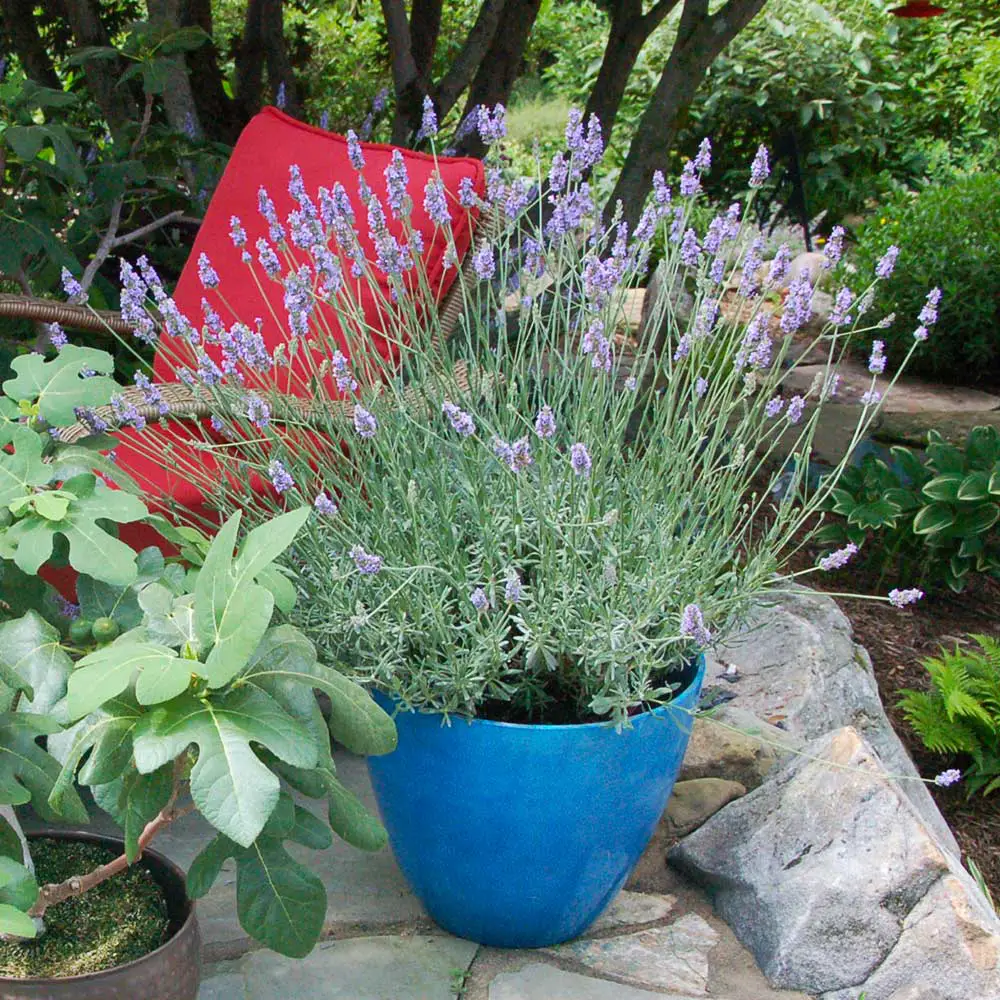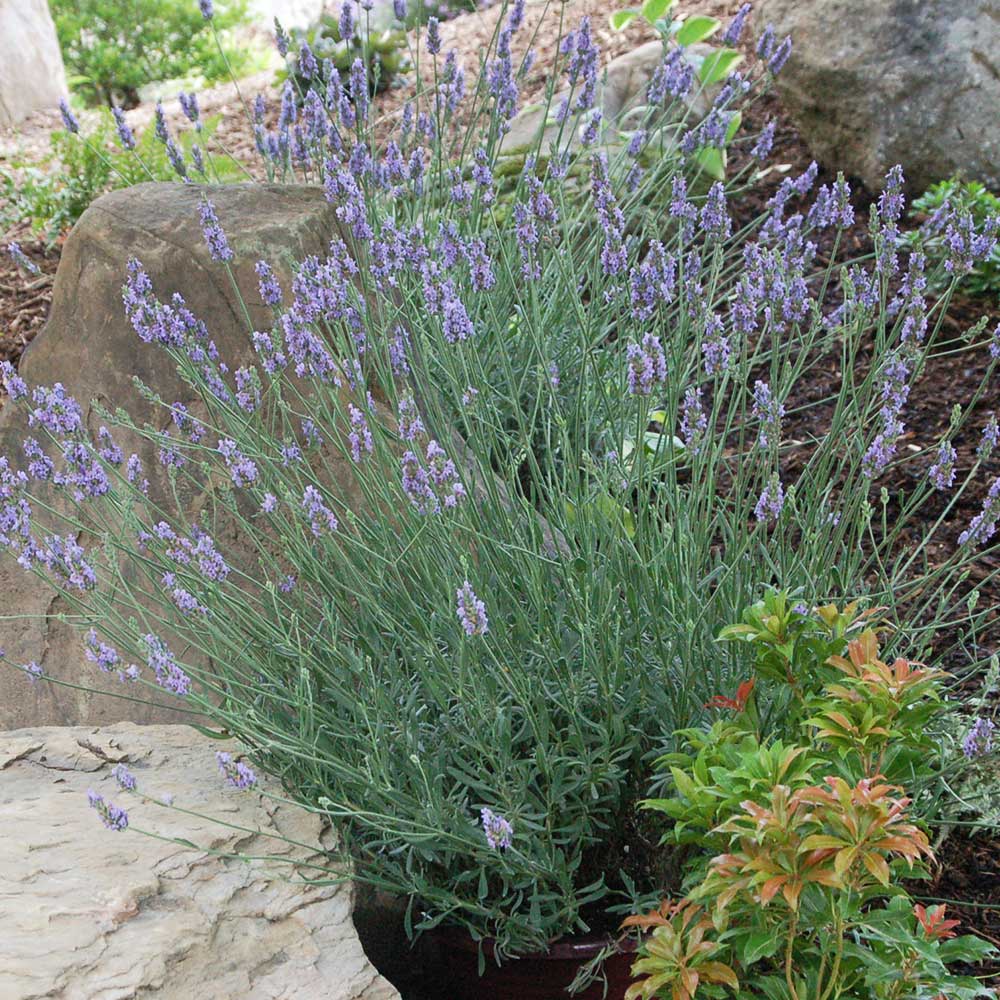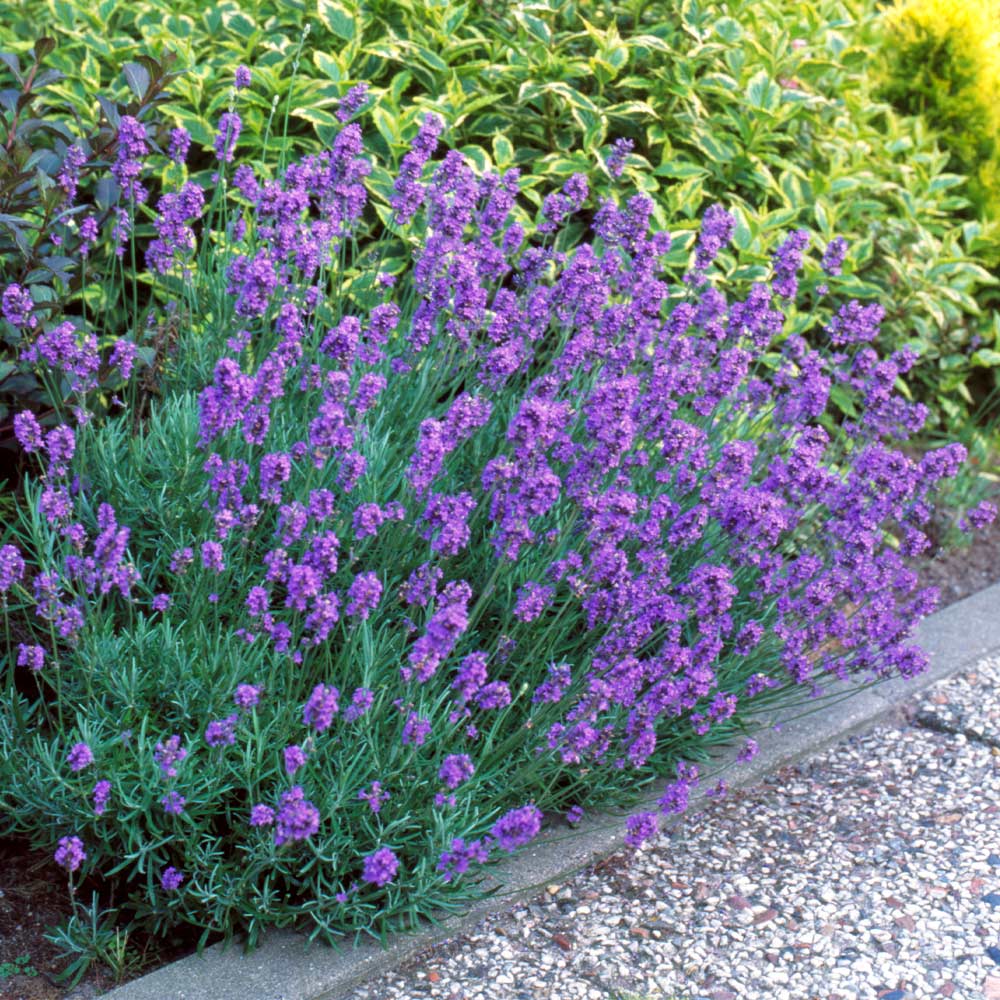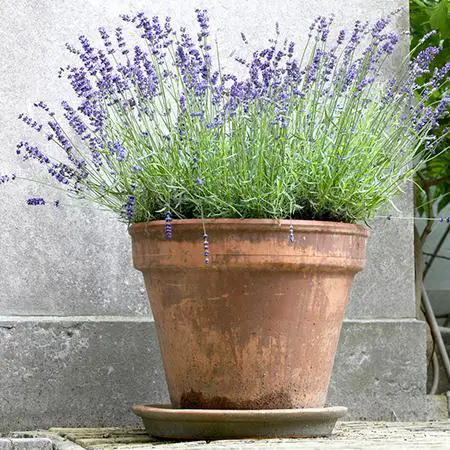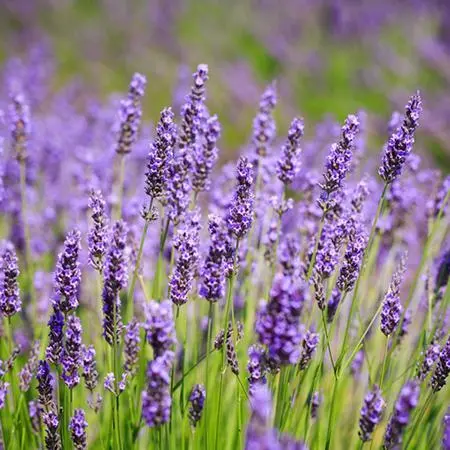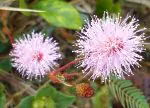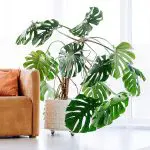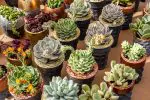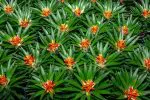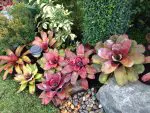This post contains affiliate links. If you buy something from one of our links we may earn a commission. Thanks
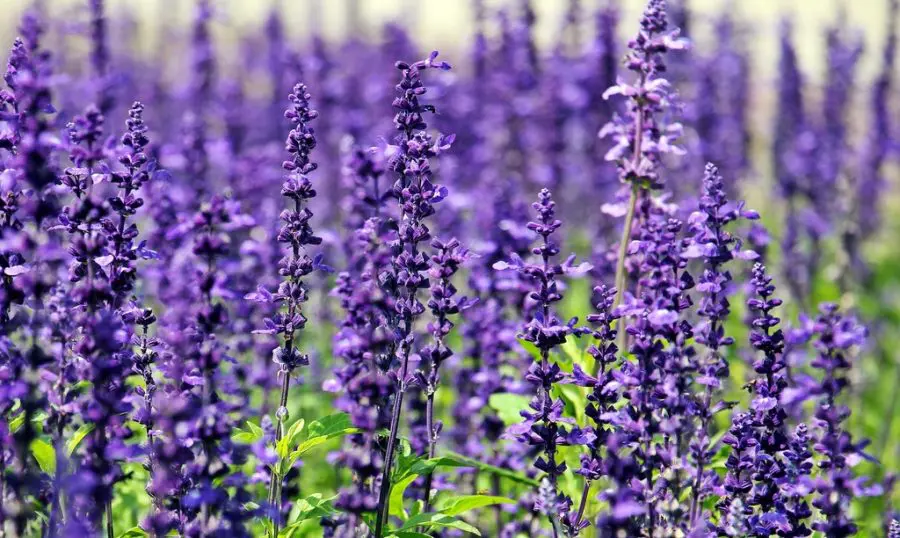
Discover the joy of growing fragrant lavender with our easy guide on how to care for lavender plants in pots. Get ready to enjoy their beauty & aroma at home!
Caring for Lavender Plants in pots requires well-drained soil and plenty of sunlight. Place the pot in a location that receives at least 6 to 8 hours of direct sun daily. Water sparingly, allowing the soil to dry out between waterings. Fertilize sparingly and prune back in spring to encourage new growth.
Imagine having the beautiful sight and calming aroma of lavender right at your fingertips. Well, you don’t have to just dream about it!
In this guide, we’ll show you how to care for lavender plants in pots, transforming your home into a haven of enchanting fragrance and charm.
Get ready to embark on a delightful journey as you cultivate your very own potted lavender paradise. So, let’s dive in and explore the world of lavender together!
How To Care For Lavender Plants In Pots
Welcome, fellow lavender enthusiasts! We’re thrilled to have you here as we embark on an exciting journey to bring the captivating beauty and soothing scent of lavender into your home.
This guide is all about mastering the art of caring for lavender plants in pots, so you can easily grow and maintain these lovely plants, regardless of your available space.
Together, we’ll unravel the secrets to nurturing a thriving lavender garden, right within the cozy confines of your home.
Let’s get started and turn your space into a fragrant lavender garden!
The Allure of Lavender Plants
Lavender plants have long captivated gardeners and plant lovers alike, with their striking purple flowers and irresistible scent.
Belonging to the genus Lavandula, these perennial plants are native to the Mediterranean region but have been successfully grown in various climates around the world.
With over 45 species and numerous cultivars, lavender offers a delightful array of options for your home garden.
Apart from their aesthetic appeal, lavender plants also boast numerous therapeutic and culinary uses, making them a versatile and cherished addition to any space.
Types Of Lavender Plants
What type of lavender should you grow? There are 3 main types. If you will be growing indoors English lavender is a shorter variety and is better suited for indoors but whatever type you choose can make a great container plant.
English, French, and Spanish lavenders are different varieties of lavender plants, each with distinct characteristics and properties. Their scientific names are as follows:
English Lavender (Lavandula angustifolia): English lavender, also known as true lavender or common lavender, is the most widely cultivated lavender species.
It is native to the Mediterranean region and is characterized by its compact size, strong fragrance, and purple-blue lavender flowers.
English lavender is typically used for its essential oils, which are known for their calming and soothing properties.
French Lavender (Lavandula stoechas): French lavender, is native to the Mediterranean region, particularly Southern Europe and Northern Africa.
It has distinctive, dark purple flowers with a pinecone-like shape and is topped with petal-like bracts, giving it a unique appearance.
French lavender is often used for ornamental purposes due to its vibrant color and is less commonly used for its essential oil, which has a different scent profile compared to English lavender.
Spanish Lavender (Lavandula latifolia): Spanish lavender, also known as broad-leaved lavender or spike lavender, is native to the Western Mediterranean region.
It has long, narrow leaves and dense, conical flower spikes with small, pale purple to violet flowers.
Spanish lavender is often used for its essential oil, which has a more camphoraceous scent compared to English lavender and is valued for its antiseptic properties.
It’s worth noting that there can be some confusion between French and Spanish lavenders due to their overlapping native ranges and similarities in appearance.
However, their distinct flower shapes and scent profiles can help differentiate them.
The Advantages of Growing Lavender in Pots
Growing lavender in pots comes with a host of benefits, making it an appealing option for both novice and experienced gardeners.
Here are a few reasons why potted lavender plants are a fantastic choice:
• Space-Saving Solution: Not everyone has access to a large garden, but that shouldn’t stop you from enjoying the wonders of lavender.
Pots provide an excellent space-saving solution. Having a container garden allows you to grow these lovely plants on your patio, balcony, or even indoors.
• Easier Maintenance: Caring for lavender in pots simplifies maintenance tasks, such as watering, weeding, and pruning.
With everything contained within the pot, you can easily monitor your plant’s growth and health.
• Portability and Flexibility: Potted lavender plants offer the advantage of portability.
As the seasons change or your needs evolve, you can easily move your plants to different locations, ensuring they receive the optimal amount of sunlight and warmth.
• Better Pest and Disease Control: Growing lavender in pots can help reduce the risk of pests and diseases spreading from the surrounding soil.
You can also isolate affected plants more easily, preventing the spread of issues to other plants in your collection.
So, with these benefits in mind, let’s dive deeper into the world of potted lavender and discover how to grow and care for these enchanting plants.
Choosing the Right Lavender Variety for Pots
Embracing the Classic: English Lavender
English lavender varieties are among the most popular and beloved choices for home gardeners.
With their exceptional fragrance and hardiness, it’s easy to see why they hold such a special place in our hearts.
Two standout dwarf varieties perfect for growing in pots are:
Munstead Lavender: This compact English lavender variety is a true favorite among lavender enthusiasts.
With its striking blue-purple flowers and sweet, powerful aroma, Munstead Lavender brings a touch of classic charm to any potted garden.
It’s also known for its hardiness and ability to withstand colder temperatures, making it a versatile choice for various climates.
Blue Hidcote Lavender: Another fantastic English lavender variety for pots is Blue Hidcote.
This dwarf cultivar boasts stunning deep blue flowers that create a striking contrast against its silvery-green foliage.
Its strong fragrance is a delightful bonus, making it a perfect choice for those who crave the intense aroma that English lavender varieties are known for.
It’s worth noting that English lavender varieties generally have a stronger scent compared to their French counterparts, making them ideal for those who appreciate the full sensory experience that lavender has to offer.
What Makes Hidcote Purple Lavender Plants Unique?
The Hidcote Lavender Plant combines an enchanting aroma with stunning color, resulting in a truly captivating addition to your garden.
This plant features a dense growth pattern and a profusion of vivid blossoms, making it ideal for various settings, from patio containers to indoor displays.
The purple flowers and compact size of the Hidcote Lavender allow for versatile placement options.
| Mature Height: | 1-3 ft. |
| Mature Width: | 1-3 ft. |
| Sunlight: | Full Sun |
| Growth Rate: | Moderate |
| Botanical Name: | Lavandula angustifolia ‘Hidcote’ |
| Does Not Ship To: | AZ |
| Your Growing Zone: | 8 |
Visitors and neighbors will be charmed by its delightful fragrance. Moreover, the Hidcote demonstrates resilience against heat, humidity, drought, and cold.
It flourishes in the full sun which can cause similar varieties to wither and continues to bloom, attracting pollinators while deterring unwanted insects like mosquitoes.
Growing Zones: 5-8 outdoors (hardy down to -10℉)
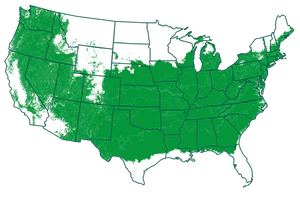
What Makes the Remarkable™ Lavender Plant Stand Out?
Resilient, colorful, and adaptable, the Remarkable™ Lavender Plant flourishes in challenging environments while showcasing unparalleled beauty.
An Aromatic, Hardy Flowering Plant
Setting itself apart from other varieties, this extraordinary plant withstands harsh heat and cold effortlessly.
Its ability to thrive in containers makes it perfect for adorning your porch, patio, or even indoor spaces.
The lavender’s eye-catching purple blossoms and compact form allow for versatile placement options.
Visitors and neighbors will be captivated by the delightful, floral aroma that welcomes them as they enter your outdoor space.
The Remarkable™ Lavender Plant’s blooms not only attract elegant wildlife, such as butterflies but also deter unwelcome deer and other critters.
With the Remarkable™ Lavender Plant, you can simply plant and enjoy its captivating blossoms and fragrance when they take center stage.
It’s the perfect choice for both seasoned gardeners and those looking to start their plant collection.
Growing Zones: 5-9 outdoors (hardy down to -10℉)
| Mature Height: | 1-3 ft. |
| Mature Width: | 1-3 ft. |
| Sunlight: | Full Sun |
| Growth Rate: | Moderate |
| Botanical Name: | Lavandula intermedia ‘Phenomenal’ |
| Does Not Ship To: | AZ |
| Grows Well In Zones: | 5-9 outdoors |
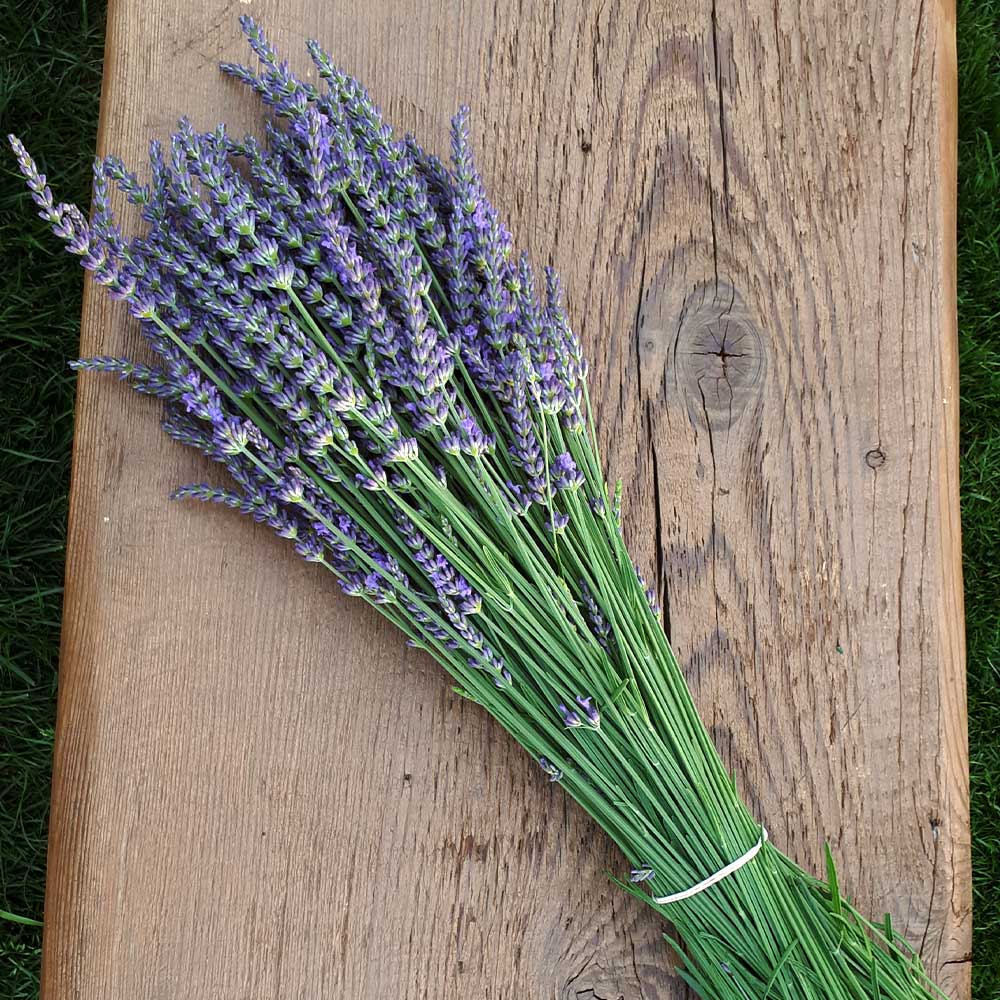
Exploring Other Suitable Lavender Varieties for Pots
While English lavender varieties are undoubtedly popular, there are other fantastic options worth considering for your potted lavender garden.
Here are a couple of alternatives to explore:
French Lavender (Lavandula stoechas): French Lavender is known for its distinctive, showy flower spikes topped with petal-like bracts.
While its scent is milder than English lavender, it still offers a delightful fragrance and adds an elegant touch to any space.
This variety thrives in warm, sunny locations, making it a fantastic choice for those living in warmer climates.
Lavender ‘Thumbelina Leigh’: This compact, dwarf variety is a cross between English and French lavender, offering the best of both worlds.
Thumbelina Leigh is an excellent choice for pots, as it reaches only about 12-16 inches in height.
Its deep purple flowers emit a lovely scent, and its silver-green foliage creates a beautiful contrast, making it a striking addition to any indoor or outdoor potted garden.
Experimenting with different lavender varieties can be a rewarding experience, so don’t hesitate to try new cultivars and discover which ones resonate with you and your space.
What Sets the Spectacular™ Lavender Plant Apart?
Lush Blooms Combine with Unrivaled Aroma
Lush, abundant blossoms meet striking silver foliage, resulting in a breathtaking contrast that sets the Spectacular™ Lavender Plant in a league of its own.
This plant features a compact, dense growth pattern with superb branching, making it suitable for a wide range of settings, from patio containers to indoor decorations.
The lavender’s purple blooms and optimal size allow for versatile placement options.
Visitors and neighbors will be captivated by the delightful, floral aroma of lavender.
The Spectacular™ Lavender Plant remains resilient against heat, humidity, drought, and cold throughout its growth.
Furthermore, it flourishes in intense sunlight that would cause similar varieties to wither.
Growing Zones: 5-9 outdoors (hardy down to -10℉)
| Mature Height: | 1-3 ft. |
| Mature Width: | 1-3 ft. |
| Sunlight: | Full Sun |
| Growth Rate: | Moderate |
| Botanical Name: | Lavandula x intermedia |
| Does Not Ship To: | AZ |
| Grows Well In Zones: | 5-9 outdoors |
Getting Started with Growing Lavender in Pots
Now that you’ve chosen the perfect lavender variety for your potted garden, it’s time to embark on an exciting journey and learn how to care for lavender plants in pots and start growing these fragrant beauties.
We’re here to guide you every step of the way! Growing lavender in pots is a rewarding and enjoyable experience, especially when you’re equipped with the right knowledge and tools.
In this section, we’ll cover the essentials you’ll need to get started, from selecting the perfect pot to preparing the ideal soil mix.
So, let’s dive in and transform your space into a thriving lavender haven!
Gathering Essential Materials and Tools
Before you begin your potted lavender journey, it’s essential to gather the necessary materials and tools to set yourself up for success.
Here’s what you’ll need:
Lavender seeds or plants: Depending on your preference, you can start your potted lavender garden with seeds or young plants from a nursery. Seeds allow you to experience the entire growing process, while young plants offer a quicker start.
Pots: Choose pots with adequate drainage holes to ensure your lavender plants stay healthy. More on pot selection in the next section.
Soil mix: A well-draining, sandy soil mix is crucial for lavender plants to thrive. You’ll also need a seed starting medium if you’re growing lavender from seeds. We’ll cover soil selection in detail below.
Trowel: A small trowel is handy for planting and transplanting your lavender.
Pruner or scissors: Keep a pair of pruners or sharp scissors on hand for pruning your lavender plants as they grow.
Choosing the Right Pot and Soil
Selecting the Best Soil for Lavender in Pots
Lavender plants require well-draining, slightly alkaline soil with a pH between 6.5 and 7.5.
A potting soil blend of one part coarse sand, one part perlite or pumice, and two parts compost or well-aged manure works well for potted lavender plants.
When starting lavender seeds, using coco coir as a seed starting medium is an ideal choice.
Coco coir, made from the fibers of coconut husks, is an eco-friendly alternative to peat moss.
It is naturally high in organic matter and has excellent water retention and drainage properties, which are crucial for seed germination.
Additionally, coco coir is more sustainable and less acidic than peat, making it better for both your plants and the environment.
Importance of Drainage and Pot Size
Selecting the right pot is crucial for your lavender plants’ health and growth. Ensure that your chosen pot has sufficient drainage holes to allow excess water to drain away and prevent waterlogging, which can lead to root rot and other issues.
As for pot size, consider the mature size of your chosen lavender variety.
Generally, a pot that is 12-16 inches in diameter and at least 12 inches deep is suitable for most lavender plants.
This size allows enough room for root growth while ensuring your plant remains stable and well-supported.
Terracotta pots or ceramic pots are a good choice but plastic pots are cheaper and work just fine.
Make sure any container has holes in the bottom of the pot for good drainage.
By carefully selecting the right pot and soil for your lavender plants, you’ll create a strong foundation for a thriving potted garden.
Growing Lavender from Seed
Ready to experience the magic of growing lavender from seed? You’re in for a treat!
Starting lavender plants from seeds is a rewarding and fascinating process that allows you to witness the incredible transformation from tiny seeds to fragrant, blooming beauties.
Learning how to care for lavender plants in pots from seedlings is an exciting thing to see as your new babies grow to adulthood.
In this section, we’ll walk you through the steps of successful seed germination and share essential tips to help your lavender seeds flourish.
So, gather your seeds, roll up your sleeves, and let’s get started on this enchanting adventure together!
Planting Lavender Seeds: Step by Step
Growing lavender from seed might seem a bit challenging, but with patience and proper care, you can enjoy the satisfaction of nurturing your plants from the very beginning.
Here’s how to get started:
Prepare the seed starting medium: Fill a seed tray or small pots with a moistened seed starting medium, such as coco coir. Ensure the medium is damp but not overly wet.
Sow the seeds: Lightly sprinkle your lavender seeds over the surface of the seed starting medium. Lavender seeds germinate better in light, so avoid burying them deeply. Gently press the seeds into the medium, ensuring good contact.
Maintain optimal conditions: Cover the seed tray or pots with a clear plastic lid or plastic wrap to maintain moisture and warmth. Place them in a bright location, but avoid direct sunlight. The ideal temperature for lavender seed germination is between 65-70°F (18-21°C).
Keep an eye on progress: Check the seeds daily to ensure the medium remains moist and watch for signs of germination. Lavender seeds usually take 2-4 weeks to germinate, so be patient.
Tips for Successful Germination
Stratification: Lavender seeds often benefit from a stratification period before planting.
This process involves exposing the seeds to a cold, moist environment to break dormancy and encourage germination.
Place your seeds in a damp paper towel, seal them in a plastic bag, and refrigerate for 2-4 weeks before sowing.
Light exposure: As mentioned earlier, lavender seeds germinate better in light. Make sure to keep your seeds close to the surface of the seed starting medium to optimize their exposure to light.
Patience is key: Germination times can vary, so don’t be disheartened if your seeds take a little longer to sprout. Just keep monitoring the conditions and maintain patience throughout the process.
Transplanting Lavender Seedlings into Pots
Once your lavender seedlings have developed their first set of true leaves, it’s time to transplant them into their permanent pots.
Follow these steps for a successful transplant:
• Prepare the pots: Fill your chosen pots with the appropriate well-drained soil mix (as discussed earlier) and water the soil lightly to settle it.
• Carefully remove seedlings: Gently loosen the seed starting medium around the seedlings using a small fork or your fingers. Carefully lift the seedlings by their leaves, avoiding damage to their delicate roots.
• Plant the seedlings: Create a small hole in the soil of the new pot, and place the lavender seedling into the hole. Gently firm the soil around the seedling, ensuring that the base of the stem is at the same level as the soil surface.
• Care for the transplanted seedlings: Place the newly potted lavender seedlings in a bright, well-ventilated location, and water them as needed. Be cautious not to overwater, as lavender prefers drier conditions.
With your lavender seedlings successfully transplanted, you’re well on your way to enjoying a thriving potted lavender garden.
Indoor Lavender Plant Care
Now that your potted lavender plants are growing, it’s time to learn the ins and outs of indoor lavender plant care.
Nurturing your lavender plants indoors can be a delightful experience, filling your space with their enchanting fragrance and soothing presence.
In this section, we’ll explore the essential elements and best way of caring for your indoor lavender plants, from optimal lighting and watering to proper pruning techniques.
With our guidance and your loving care, your indoor lavender oasis will thrive and flourish. So, let’s dive into the world of indoor lavender plant care together!
Reaping the Rewards: Benefits of Having Lavender Plants Indoors
Growing lavender plants indoors not only adds a touch of natural beauty to your space but also provides numerous benefits, such as:
Aromatherapy: Lavender’s calming fragrance can help reduce stress and anxiety, promoting relaxation and a sense of well-being.
Improved air quality: Lavender plants help purify the air by absorbing toxins and releasing oxygen, contributing to a healthier indoor environment.
Pest control: The fragrance of lavender acts as a natural deterrent for pests like mosquitoes and moths, helping to keep your home bug-free.
Finding the Perfect Spot: Ideal Conditions and Location for Indoor Lavender Plants
To ensure your indoor lavender plants thrive, it’s crucial to provide them with the right growing conditions:
Light: Lavender plants require at least 6-8 hours of bright, indirect sunlight per day. Place them near a south-facing window or under a grow light to ensure they receive enough light.
Temperature: Indoor lavender plants prefer a temperature range of 65-75°F (18-24°C) during the day and slightly cooler temperatures at night. Avoid placing your plants near drafts or heat sources to maintain a consistent temperature.
Humidity: Lavender plants prefer moderate humidity levels. If your indoor environment is particularly dry, consider using a humidifier or placing a tray of water near your plants to increase humidity.
Watering and Fertilizing Indoor Lavender
How Often to Water Lavender in Pots
Lavender plants are drought-tolerant and prefer well-draining soil. Allow the top 1-2 inches of soil to dry out between waterings.
Overwatering can lead to root rot, so it’s essential to err on the side of caution and water less frequently.
Proper Fertilization Techniques
Lavender plants generally don’t require much fertilization. However, if you notice signs of nutrient deficiency, such as yellowing leaves, you can apply a balanced, slow-release fertilizer in the spring.
Avoid over-fertilizing, as this can lead to weak, leggy growth and reduced flower production.
Propagating Lavender
One of the joys of growing lavender is the ability to propagate new plants from your existing ones. Here are two popular methods:
Cuttings:
Take 3-4 inch stem cuttings from a healthy lavender plant, remove the lower leaves, and dip the cut end in rooting hormone. Plant the cuttings in a well-draining soil mix and keep them moist until roots develop.
Layering:
Gently bend a long, healthy stem towards the soil, making a small nick in the stem where it touches the soil.
Bury the nicked part of the stem in the soil, leaving the tip exposed. The stem will eventually develop roots at the buried section, and you can then sever the new plant from the parent plant.
With proper care and attention to detail, your indoor lavender plants will reward you with their beauty, fragrance, and numerous benefits.
Division
If you’re interested in propagating lavender through division older lavender plants are not suitable for propagation by division, as their root ball has very woody stems making them almost impossible to divide without damaging the plant.
It may be possible to divide younger plants but using stem cuttings is much easier and safer for your plant.
For lavender, the best methods of propagation are taking stem cuttings or layering, as previously mentioned.
These methods are more effective in creating new, healthy lavender plants while maintaining the desirable traits of the parent plant.
Outdoor Lavender Plant Care
Embracing the beauty of lavender plants in your outdoor space is a fantastic way to add color, fragrance, and texture to your garden.
Lavender plants thrive in the great outdoors, attracting pollinators and providing a charming, Mediterranean feel to your landscape.
In this section, we’ll guide you through the essential aspects of outdoor lavender plant care, ensuring your plants remain healthy and vibrant all season long.
From proper watering and fertilizing to winter care, we’ve got you covered! So, let’s get started on creating your stunning outdoor lavender sanctuary.
Crafting the Perfect Setting: Creating the Ideal Outdoor Environment for Potted Lavender
To ensure your potted lavender plants flourish outdoors, consider the following factors:
Location: Choose a sunny spot in your outdoor space that receives at least 6-8 hours of sunlight per day. Lavender thrives in full sun, so the more sun exposure, the better.
Drainage: Make sure your pots have sufficient drainage holes to prevent waterlogging. Elevate your pots on pot feet or bricks to further improve drainage and prevent excess moisture buildup.
Air circulation: Lavender plants benefit from good air circulation, which helps prevent diseases and pests. Space your pots adequately to allow air to flow freely between them.
Watering and Fertilizing Outdoor Lavender
How Often to Water Lavender in Pots
Outdoor lavender plants in pots require a similar watering schedule to those grown indoors.
Allow the top 1-2 inches of soil to dry out between waterings, and avoid overwatering.
Lavender plants are drought-tolerant, so it’s better to underwater than overwater them.
Proper Fertilization Techniques
Like indoor lavender plants, outdoor plants don’t require much fertilization.
If your plants appear to be struggling or showing signs of nutrient deficiency, the best time to apply a balanced, slow-release fertilizer in the early spring.
Avoid over-fertilizing, as this can lead to weak, leggy growth and reduced flower production. Stop fertilizing in late summer so the plants can begin to harden off for winter.
Overwintering Outdoor Lavender Plants
Lavender in Pots Over Winter
As winter approaches, you’ll need to prepare your outdoor potted lavender plants for the colder months.
If you live in an area with mild winters, your plants may survive outdoors with some added protection.
Move your pots to a sheltered location, such as against a south-facing wall, to shield them from harsh winds and frost.
Winter Care Tips
For colder climates where temperatures drop below freezing, consider the following winter care tips:
Insulate the pots: Wrap your pots in bubble wrap, burlap, or frost cloth to provide extra insulation and protect the roots from freezing temperatures.
Bring plants indoors: If you have space, move your potted lavender plants to a cool, bright room or garage with temperatures around 40-50°F (4-10°C) during the winter months.
Ensure they receive some natural light and monitor the soil moisture, watering sparingly as needed.
By providing the proper care and attention, your outdoor lavender plants will not only survive but thrive, enchanting your garden with their beauty and fragrance for seasons to come.
Troubleshooting Common Lavender Plant Problems
As with any gardening endeavor, learning how to care for lavender plants in pots can sometimes present challenges and difficulties.
But don’t worry, we’re here to help you overcome these obstacles and ensure your lavender plants stay healthy and beautiful.
In this section, we’ll address common lavender plant problems, from pest infestations to diseases, and provide practical solutions to keep your plants thriving.
With our expert guidance and a little perseverance, you’ll be well-equipped to tackle any issues that may arise, ensuring your lavender plants continue to flourish and brighten your space.
Let’s dive in and troubleshoot those pesky lavender plant problems together!
Tackling Troubles: Identifying and Addressing Common Issues
When it comes to lavender plant problems, early detection and intervention are key. Here are some common issues you may encounter and their solutions:
Root rot: Overwatering or poor drainage can lead to root rot, which can cause yellowing leaves, wilted stems, and eventual plant death.
To combat root rot, reduce watering frequency, improve pot drainage, and consider repotting the plant in fresh, well-draining soil.
Pests: Aphids, whiteflies, and spider mites are common pests that can infest lavender plants.
To address these issues, use insecticidal soap or neem oil, and introduce beneficial insects like ladybugs or lacewings to help control the pests.
Diseases: Lavender plants can be susceptible to fungal diseases like powdery mildew or leaf spot.
To prevent and treat these diseases, ensure proper air circulation, avoid overhead watering, and apply a fungicide if necessary.
Plant Guardians: Preventative Measures to Keep Lavender Plants Healthy
To keep your lavender plants in top shape, follow these preventative measures:
Adequate sunlight: Ensure your lavender plants receive at least 6-8 hours of sunlight per day to promote strong, healthy growth and reduce the risk of disease.
Proper watering: Allow the top 1-2 inches of soil to dry out between waterings. Overwatering can lead to root rot and other issues, so it’s crucial to establish a suitable watering schedule.
Pruning: Regular pruning promotes healthy growth and prevents the plant from becoming too woody. Prune back lavender plants by about one-third each year after they’ve finished blooming to encourage bushy, compact growth.
Air circulation: Space your lavender plants adequately to allow for good air circulation, which can help prevent diseases and pests.
By taking these preventative steps and addressing any problems that arise, you’ll set your lavender plants up for success, enjoying their beauty and fragrance for years to come.
Indoor Light Requirements for Lavender Plants
Meeting the lighting needs of sun-loving lavender plants indoors can be a challenge, especially if you don’t have access to a sunny, south-facing window.
If you want to learn how to care for lavender plants in pots it is something you’ll need to master.
However, with a little help from modern technology, you can still successfully grow and care for your lavender plants in any indoor space.
In this section, we’ll discuss the importance of proper lighting for indoor lavender plants and how to supplement natural light with LED grow lights.
Let’s illuminate the path to a thriving indoor lavender garden, regardless of your home’s lighting situation.
Understanding the Importance of Light for Indoor Lavender Plants
Lavender plants require plenty of sunlight to grow strong, produce flowers, and emit their delightful fragrance.
Insufficient light can lead to leggy growth, reduced blooming, and an overall weaker plant.
To ensure your indoor lavender plants thrive, it’s crucial to provide them with the right amount of light, mimicking their natural outdoor environment.
Supplementing Natural Light with LED Grow Lights
If your indoor space lacks a sunny, south-facing window or simply doesn’t provide enough natural light, LED grow lights can come to the rescue.
LED grow lights are energy-efficient and emit a full spectrum of light, closely resembling sunlight, which is ideal for promoting healthy growth in your lavender plants.
Choosing the right LED grow light: Look for a grow light with a full spectrum of white light, which includes all the wavelengths of natural sunlight.
Positioning your grow light: Place the LED grow light above your lavender plants to provide them with ample light without causing heat stress.
The actual height will depend on the strength of your grow light but generally 18-24 inches will work. If you see bleaching or stressed leaves raise your light.
As your plants grow, you may need to adjust the height of the light to maintain proper distance.
Setting a timer: To mimic the natural day-night cycle, set a timer for your LED grow light to provide your lavender plants with 10-12 hours of light per day.
This will ensure your plants receive the necessary amount of light without overexposure.
By carefully supplementing your indoor lavender plants with LED grow lights, you can create a thriving indoor lavender garden, even in spaces with limited natural light.
Caring for Lavender Plants FAQs
Growing lavender plants in pots is a rewarding endeavor, bringing the fragrant and therapeutic herb right to your doorstep.
The questions surrounding pot-grown lavender range from basic care to troubleshooting common problems.
Whether you’re a gardening enthusiast or a lavender-loving homeowner, you’ve likely wondered how best to nurture this aromatic plant.
Here are answers to four commonly asked questions.
Q: How often should you water lavender in pots?
A: Lavender prefers dry conditions and doesn’t tolerate waterlogged soil.
Therefore, water your potted lavender only when the top inch of soil feels dry to the touch.
Q: What type of soil is best for lavender in pots?
A: Lavender thrives in well-draining soil that is slightly alkaline. Consider using a cactus or citrus potting mix and adding a handful of lime to increase the soil’s alkalinity.
Q: Can lavender be grown indoors?
A: While lavender prefers outdoor conditions, it can be grown indoors if you provide at least 6 to 8 hours of direct sunlight and good air circulation.
Q: Do you need to fertilize lavender in pots?
A: Lavender generally doesn’t require much fertilization. If you wish to fertilize, use a slow-release, low-nitrogen fertilizer at the beginning of the growing season.
How To Care For Lavender Plants In Pots Final Thoughts
As we wrap up our journey into the enchanting world of lavender plants, we hope this guide has equipped you with the knowledge and confidence to grow and care for these beautiful, fragrant plants in pots.
Whether you choose to cultivate them indoors or outdoors, lavender plants can be a rewarding addition to your space, offering a touch of Mediterranean charm and a host of benefits.
With the right care and a little attention, your lavender plants will thrive, bringing a sense of serenity and joy to your home or garden.
Thank you for joining us on this adventure of how to care for lavender plants in pots, and happy lavender gardening!
Summing It Up: Recap of Caring for Lavender Plants in Pots
Throughout this guide, we’ve covered essential steps and tips to help you successfully grow and care for lavender plants in pots, including:
• Choosing the right lavender variety for your indoor or outdoor space
• Gathering necessary materials and tools for planting and potting
• Properly planting and caring for your lavender plants, whether grown from seed or propagated through other methods
• Providing optimal indoor and outdoor care, including appropriate lighting, watering, and fertilization
• Troubleshooting common lavender plant problems and implementing preventative measures
• Sharing the Lavender Love: Encouragement to Enjoy and Share the Beauty of Potted Lavender Plants
Now that you’re well-versed in the art of how to care for lavender plants in pots, we encourage you to enjoy their captivating beauty and fragrance and share your newfound knowledge and passion with others.
Lavender plants make lovely gifts, and their versatility allows them to be enjoyed both indoors and outdoors.
By sharing your lavender plants and expertise, you can inspire others to embrace the joy of gardening and discover the many benefits of this delightful, aromatic plant.
So, go forth and spread the lavender love, creating a world filled with the calming, therapeutic fragrance of these enchanting plants. Happy gardening!
Read more about the Benefits Of Keeping Indoor Plants

